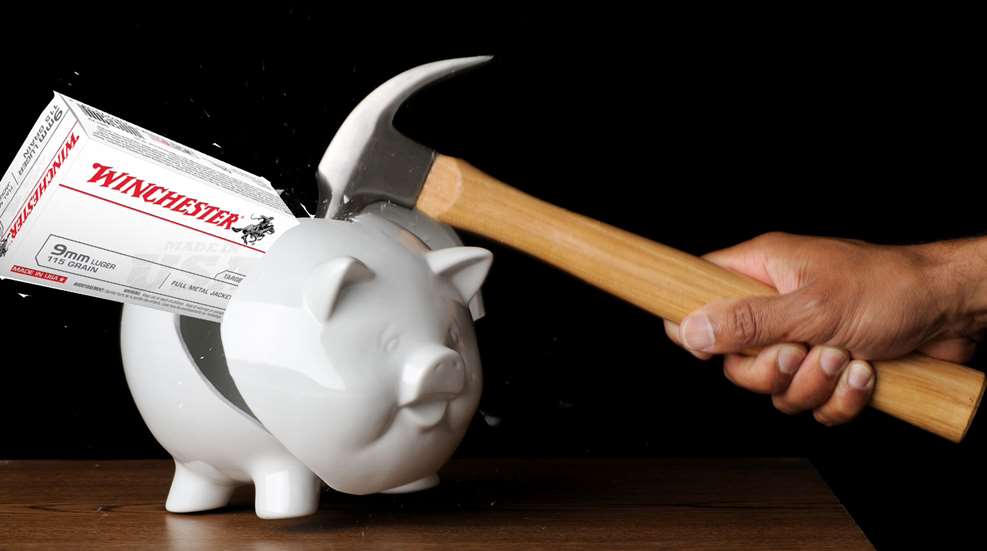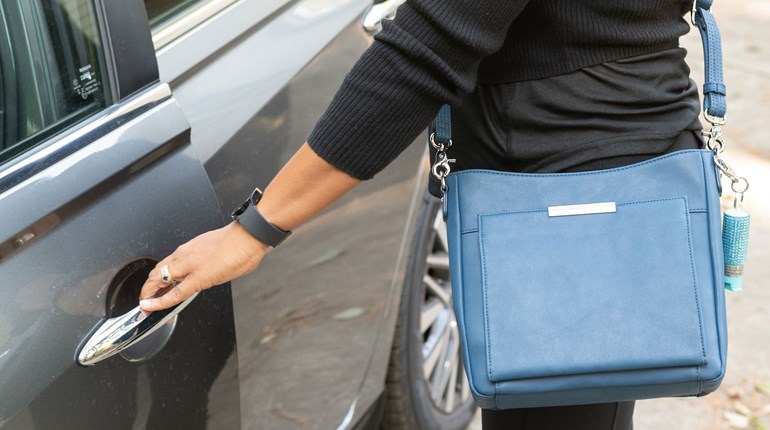
To be clear, being employed by the NRA doesn’t automatically qualify me (or any other editor) unfettered access to ammunition. As much as I wish it were true, I have had to correct that assumption on more than one occasion in the past year. With the exception of the thousands of rounds of 9 mm and .380 set aside for Ladies Pistol Project 4 (generously supplied by LPP sponsor Winchester Ammunition in early 2020), the shelves in our ammo locker look a lot like the ammo aisles in most of the big box stores—barren. We editors are struggling right along with our readers.
For my private stash, I am on the same waiting lists for nearly all of the online suppliers as everyone else, and am quick to make a purchase once I receive an e-mail advising me of availability. If I don’t purchase it within minutes (or seconds) of that notification, I’ve lost my chance. And I’ve been treating my personal supply the way I would a childhood piggy bank. Whatever I am able to accumulate through luck or good timing goes into the bank, forgotten about and saved for a future date.
But a few weeks ago I decided that the future is now. It had been several months since I’d loaded up magazines and taken to the range, and I was yearning for days of yore with wanton and often wasteful shooting (just because we could). So I snuck away with NRA Women Assistant Editor Ashley Thess and headed down to our range to shoot several of the 9 mm semi-automatic pistols earmarked for use in the next Ladies Pistol Project—Taurus G3c; Mossberg MC2c; Springfield Hellcat; Springfield XDME; and a new 9 mm pistol still under embargo until this spring. My goal was to elicit from Ashley, relatively new to handguns, her impressions on the five pistols the same way we operate the Ladies Pistol Project, which included completing a survey about the form and function of each pistol.
Over the course of an hour, between us we fired only 100 rounds of 9 mm 115 gr. Winchester FMJ (commonly known as Winchester White Box), exceeding the five rounds normally allotted for each pistol in LPP, and yielding results on ease of function for each. Not exactly the excessive shooting of previous range sessions, but even those few rounds gave me a much-needed boost of serotonin.
Yes, I accumulated valuable data that will be included with results from dozens of other women later this year, but what I gained personally during that hour was even more valuable. I came to the realization that I need to let up on my overly cautious “save” mode and get out spend some of the ammo that has been accumulating. I have learned the benefits far exceed the costs.
No doubt you have also been leery about depleting your personal supply of ammunition. The self-imposed rationing we are all engaging in has the potential to become a lifelong habit (Don’t waste that 9 mm, kids! There are people in California who haven’t been to a range in years!). So unless you are down to literally your last few rounds that might be needed to protect yourself or your loved ones, don’t become a range recluse, a munition miser, an ammo accumulator. Here are five reasons, not specifically tied to maintaining your skills and proficiency, why it’s OK to burn up some of that ammo you’ve been hoarding all year (or longer).
1. It provides stress relief.
We would be hard-pressed to identify a year in recent times that has not inflicted as much personal stress as 2020. I don’t even have to list the reasons—financially, emotionally, politically—you know what they are and can even add a slew of your own. Shooting clears your mind, forcing you to focus on something other than your troubles, and can be cheaper than pharmaceuticals. The mental concentration required in target shooting will quickly distract you. And that boost of serotonin I mentioned earlier is very real. For some of us, the range is our quiet place.
2. It offers physical benefits.
Granted, it’s not exactly the same as 100 crunches—now!—demanded by your personal trainer, but you are still required to engage certain muscles that will benefit your overall well-being. Hands, arms, shoulders, upper body and core all get a workout that will build stamina over time. Trust me, unless you’ve been quarantine-curling full ammo cans in lieu of an expired gym membership, that first trip back to the range is a wakeup call! Even your eyes get a workout while target shooting, giving them a break from the screens we’ve been staring at during these times of remote work while forcing them to focus on something entirely different.
3. It provides a sense of normalcy.
Long-term breaks in our routine lead to long-term problems, both physical and mental. If you’re someone who is accustomed to the social aspects of recreational shooting and have regular range dates with friends and family, it’s important to attempt to retain a sense of normalcy for all concerned, especially if you have children. Save your 9 mm ammo and switch to a .22 rimfire that has been built in the same configuration as your center-fire pistols. There are also numerous air rifles available that mimic some of today’s most popular models of handguns and rifles. The routine of your range sessions will go a long way to reassuring those for whom you are responsible that all will be OK. Plus, your range misses you, and in some cases could use the economic boost.
4. Spoilage.
Storing ammo requires a degree of care and feeding. Ammo life varies with its production, components and the environment and climate in which it is stored. Though not as obvious as the spoiled-milk nose test, there are things to look for when assessing your store for spoilage. For example, bullet, cartridge and primer corrosion is what some call “a clue” and isn’t necessarily linked to longer-term storage. If all checks out, have a means to identify and shoot your oldest store first and have a plan for proper and responsible disposal should your investment end up short of its consume-by date.
5. The ammo supplies will eventually return.
I’m no prognosticator, but regular ammo supplies will return at … some point. Admittedly I am 100 percent guilty of hoarding one of 2020’s seemingly most valuable commodities. And while I will still keep a vigilant eye on supplies as they become available and will continue to be cautious of how much ammo I recreationally burn for the foreseeable future, I will also make a point of telling myself it’s OK to spend a little of it here and there. After all, it’s good for my health, and good for yours, too. If the price of feeling well is a hundred rounds of FMJ, I’d call it a bargain in anyone’s book, especially in these most unusual times.
Stay safe. Stay well. Go shooting.















































